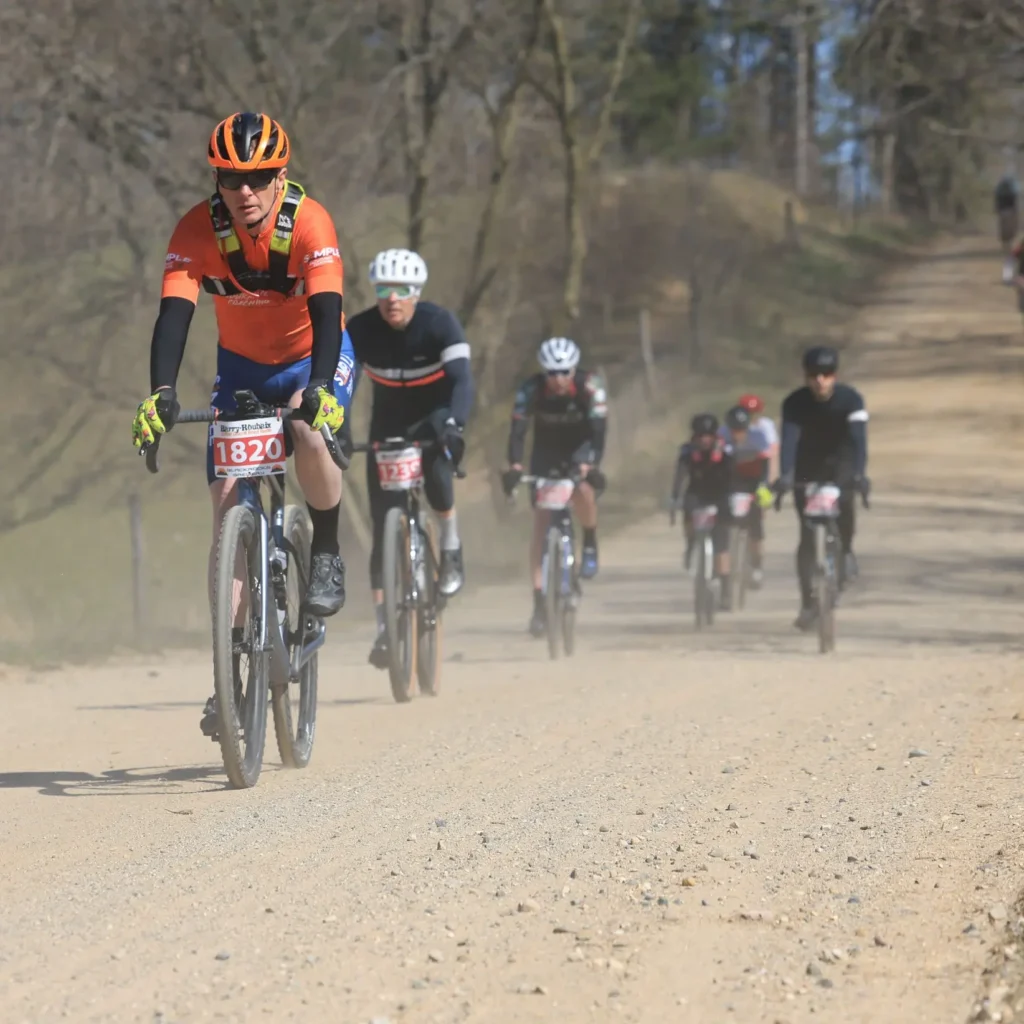
by Coach Nicole Ford
Here are Three Things to Know About GI Distress During Running
1. GI distress is common and multifactorial
Up to half of endurance runners experience GI symptoms, especially in long ultramarathons. Causes include reduced gut blood flow, heat stress, mechanical jostling, and certain fueling or hydration strategies.
2. Training the gut is crucial
Practicing your race-day fueling in training—gradually increasing carbohydrate amounts, using multiple carb sources, and consuming small, frequent doses—helps your gut adapt and reduces race-day symptoms.
3. Prevention strategies work
Reducing fiber and fat before long runs, acclimating to heat, drinking to thirst (not overdrinking), avoiding routine NSAIDs, and having an on-the-run troubleshooting plan can all significantly lower the risk of mid-race gut meltdowns.
GI Distress is a real thing
If you’ve ever had to dive into the bushes mid-run, you are very, very not alone.
GI distress—anything from nausea and reflux to cramping, urgent diarrhea, and vomiting—is one of the top performance limiters in endurance running, and it’s even more common in long trail ultras where effort, heat, and fueling all collide.
In some 100-mile events, over a third of the runners who didn’t finish cite GI issues as the reason.
What the research says
How common is it?
Large surveys and race-day studies suggest 30–50% of endurance athletes experience GI symptoms; in 161-km ultramarathons, nausea is the most common complaint among both finishers and non-finishers, and it peaks in the hardest, hottest sections.
Why does it happen? (the physiology)
- Blood flow gets diverted away from the gut. According to this study, during prolonged, intense, and/or hot running, splanchnic (gut) blood flow drops substantially to prioritize working muscles and skin. That “gut ischemia” slows gastric emptying, impairs intestinal absorption, and can damage the intestinal lining—setting up cramping, nausea, and diarrhea.
- The barrier can “leak.” Ischemia and heat stress increase intestinal permeability and can allow an endotoxin (LPS) molecule to enter circulation, provoking systemic symptoms (nausea, malaise). This is documented in runners and multi-stage ultras in the heat.
- Heat makes everything worse. Even moderate heat elevates GI symptoms and biomarkers of intestinal injury at given workloads.
- Mechanical jostling is real. The up-down impact of running aggravates upper- and lower-GI complaints more than cycling does.
Fueling and the gut
- Carb type and concentration matter. Highly concentrated, hypertonic drinks, large boluses, or carbs that rely heavily on one transporter (e.g., lots of fructose without glucose) are likelier to linger and irritate. “Training the gut”—practicing your race fueling so stomach emptying and intestinal transport adapt—reduces symptoms and improves exogenous carb use.
- Low-FODMAP strategies can help the sensitive. Early evidence (a case study and a small trial) shows that short-term low-FODMAP eating before key sessions/races can reduce exercise-related GI symptoms in athletes who are prone to them.
Hydration myths to ditch
- Overdrinking is a real risk. Exercise-associated hyponatremia (EAH) is driven primarily by overconsumption of hypotonic fluids plus non-osmotic AVP; “drinking to a plan” that forces excess can be dangerous. Learn to “drink to thirst” within reason.
- Sodium isn’t a nausea cure. In hot 100-mile races, total sodium intake wasn’t associated with lower rates of cramping, dehydration, hyponatremia, or nausea/vomiting. Use sodium to match taste/preferences and sweat replacement—just don’t expect it to fix GI distress.
NSAIDs can backfire
Pre-emptive ibuprofen during ultras increased acute kidney injury risk in a randomized trial; renal stress plus gut ischemia is not a combo you want on race day. Avoid routine/“just in case” NSAIDs.
Practical playbook: preventing and managing GI distress
1) Train your gut like you train your legs
- Rehearse race fueling: One to two times/week at goal intensity with the same carbs, forms, and timing you’ll use on race day. Build up gradually (e.g., 40 → 50 → 60–90 g carb/h depending on event length and tolerance). Aim for multiple-transportable carbs (glucose+maltodextrin+fructose blends).
- Keep most feeds small and frequent (every 10 to 15 min) rather than gut-bomb hourly intakes.
2) Adjust what you eat in the 24–48 hours before long efforts
- Go lower in fiber, fat, and very spicy foods to speed gastric emptying. Consider a short-term low-FODMAP approach if you’re symptom-prone (trial this in training first).
- Morning-of: a familiar, lower-fiber breakfast two to three hours pre-start; top up with a small carb snack/gel 1015 minutes before the gun.
3) Heat-proof your plan
- Acclimate (7–14 days of progressive heat exposure) and dial back early-race intensity in hot conditions; both reduce gut ischemia and symptom risk. Keep fluids accessible and respond to thirst; avoid “drinking ahead of thirst” by rigid schedule.
4) Build a smarter hydration & sodium strategy
- Drink to thirst within your known rate range from long training runs; expect variability with heat/altitude.
- Use sodium to flavor/replace some sweat losses, but don’t lean on it as an anti-nausea or anti-cramp fix. Excess sodium won’t save you from overdrinking (EAH). British Journal of Sports Medicine+1
5) Choose gentler fuels and keep osmolality in check
- Prefer 6–8% carb solutions or the carb intake split between gels plus water; avoid stacking high-concentration drinks with gels back-to-back.
- If fructose bothers you, use blended sources (glucose/maltodextrin plus fructose) and keep total hourly targets consistent with your gut training.
6) Mind the meds and stress
- Skip routine NSAIDs before/during long races; they raise AKI risk and may worsen gut/kidney perfusion under stress.
- Pre-race nerves amplify symptoms. Practice breathing and pacing control early in runs; surging above sustainable effort is a classic trigger for nausea. (Mechanistically tied to reduced splanchnic blood flow.)
7) On-trail troubleshooting (ultras)
- Early queasiness? Ease pace for five to 10 minutes, switch to sips of water, then resume small-and-frequent fueling.
- Sloshy stomach? Pause gels/drinks for about 10 minutes, walk, then restart with small sips; avoid concentrated fluids.
- Cramping/diarrhea? Back off intensity, find shade if hot, take on small sips; reassess carb type (try a different form at next aid).
- Persistent vomiting or confusion (with heavy drinking): consider medical evaluation for EAH. Do not force more plain water
Bottom line for long trail ultras
- Practice your fueling (type, amount, timing) at race-like intensities.
- Go lower fiber/fat 24–48 h pre-race; consider short-term low-FODMAP if you’re sensitive.
- Respect heat: acclimate, pace conservatively early, and drink to thirst—don’t overdrink, and don’t expect sodium to cure nausea.
- Avoid routine NSAIDs on race day.
- When symptoms hit, back off, cool off, and go small-and-frequent until the gut catches up.
Need more?
Contact Coach Nicole at [email protected].
Read more about Coach Nicole here.




